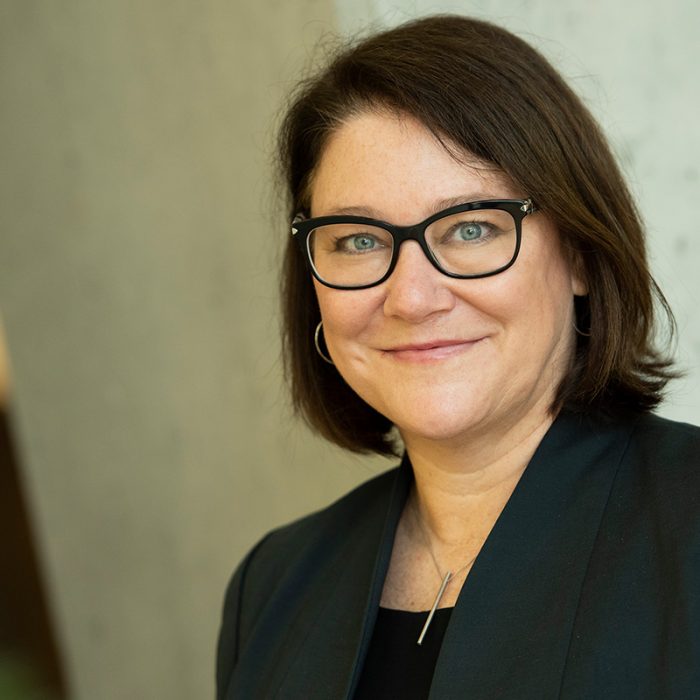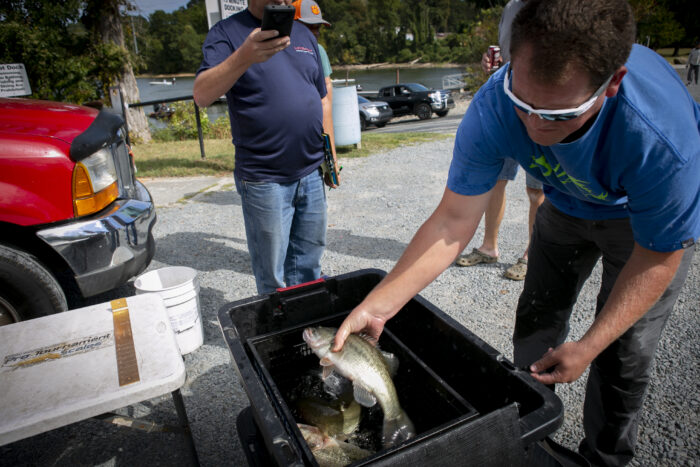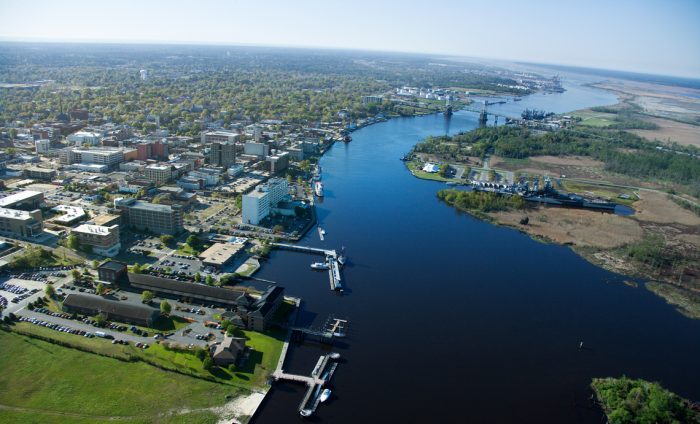Making PFAS progress across the South
A town long tied to the textile industry is cutting off pollution that long flowed freely from nearby manufacturing plants thanks to a new settlement. Negotiated by SELC on behalf of the Haw River Assembly, the agreement with the City of Burlington, North Carolina uses existing law to stop pollution at the source.
Testing at the Burlington Wastewater Treatment Plant showed high levels of perfluoroalkyl substances, or PFAS, coming into the facility and then discharging into the Haw River. PFAS is part of a class of chemicals known as forever chemicals because they don’t break down in nature and extended exposure has been linked to a variety of health issues.
Advanced testing identified textile manufacturers and landfills that were sending their untreated waste to Burlington’s wastewater treatment as the primary PFAS sources. Our agreement establishes a plan for controlling those discharges before they reach the treatment plant and, ultimately, the drinking water sources for downstream communities.

This win follows another successful settlement that curbs PFAS pollution. SELC recently negotiated an agreement in northwest Georgia that will keep PFAS out of downstream drinking water sources and recreational lakes in Georgia and Alabama. Senior Attorney Kelly Moser helps break down what these wins mean.
The Burlington settlement is a pretty big deal. Can you help us understand why?
Anytime we can get a legal agreement to cut pollution, it’s a big deal. This is also big because the city utility is using new processes to identify the major pollution sources coming into Burlington and go back to the polluter to cut off discharges, as required by law. Downstream communities such as Pittsboro, North Carolina, shouldn’t have their water sources contaminated or have to spend millions of dollars filtering out avoidable pollution from upstream industries. Plus, the city will make the data its collecting about PFAS sources and levels public, which is always a good thing.
Why are folks so concerned about PFAS pollution?
Studies have shown long-term exposure to have a variety of health impacts, including increased cancer rates, lower birth weights, higher instances of pre-eclampsia in pregnant women and more. Combine that with the fact that these compounds don’t break down in nature and aren’t removed by most water treatment facilities, and there is plenty of reason for concern.
Families shouldn’t have to suffer the health consequences of avoidable pollution from upstream industries.
Beyond exposures by air or water, are there other ways people are impacted by PFAS pollution?

Actually, we’ve just been looking at ongoing PFAS pollution in the Cape Fear River, highlighted by a new fish consumption advisory issued by the state. They’re recommending some people eat no fish and others no more than one fish per year. This is after we stopped more than 99 percent of the PFAS pollution from the Chemours plant near Fayetteville. Since fish are still showing very high PFAS levels it makes sense to look at other industries along the river, where you can quickly find a number of other possible culprits. Officials have a responsibility under the Clean Water Act to look into these potential sources and stop pollution at the source.
How does the success in Burlington interplay with our PFAS work in Wilmington and elsewhere?
The Clean Water Act empowers state officials to stop pollution at the source. Since our first actions against Chemours, we’ve seen other places embrace this approach. For instance, we just reached a similar settlement in northwest Georgia where polluters upstream of drinking water intakes and a recreational lake are cutting their discharges and phasing out the chemical. This reflects the growing embrace of the position that we need to stop pollution before it ever reaches our waters, rather than trying to remove it further downstream.
Has SELC’s work to stop forever chemicals in the South had any national impact?

Once we were able to show the effectiveness of enforcing existing law, it’s a model we’ve seen work in multiple instances and even drive action on the national level.
Since our first work on the Chemours case, the Environmental Protection Agency has issued new limits for six PFAS chemicals and directed states to use the laws already on the books that empower them to rein in this toxic pollution before it gets into our drinking water sources and causes further harm.
What gives you hope as you think about future PFAS work?
We have laws and a model that works to stop pollution at the source and hold polluters accountable, along with an industry that understands they won’t be able to practice business-as-usual forever. To me, that’s a recipe for clearing every one of our nation’s waterways of these toxic chemicals.
